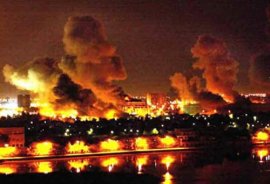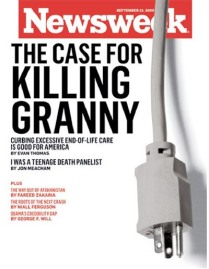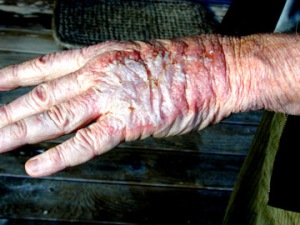The BP Oil Spill Conspiracy You Didn’t Hear About
December 16, 2010 2 Comments
POR LUIS MIRANDA | THE REAL AGENDA | DECEMBER 16, 2010
Big corporations are responsible for the destruction of the environment, that is just a fact. If you don’t believe it and don’t believe in conspiracy theories, hold on to your pants and hat because this article is going to blow them far, far away. Everyone still remembers the British Petroleum (BP) oil spill in the Gulf of Mexico. It is still fresh in my head and in the heads of many people who saw it first hand, who were displaced by it, or who are sick today because of it. Just like the disaster caused by hurricane Katrina and the attacks the United States suffered on september 11th, 2001. Everyone remembers…
Rumors went and came about the motives or causes behind the oil spill, the largest disaster in environmental history, no doubt. But time, only time can provide the answers that everyone seems to be looking for after tragedy strikes. Only time and very deep researching reveal what was and is still behind an oil spill that was called a “disaster”, but that is much more than that. This time, the answers and the reality they present seem to go beyond what any decent human being can think of. Only an evil mind could figure it out. Reality is stranger than fiction, people say. With the oil spill, it is not the exception. And it is not only stranger, but also more diabolical than what any fiction producer or director could imagine, because it has to do with human existence.

Displaced after Hurricane Katrina. The levees did not stop the water.
In a 43 minute television documentary investigation supported by documents, testimonies, visual proof and first hand straight forward lies from BP, the program Conspiracy Theory hosted by former Minnesota governor Jesse Ventura pulled the curtain off the cover up and revealed that the oil spill was not only an accident, a disaster, a tragedy, but it was in fact a carefully crafted event to bring about coastal mass depopulation, death, sickness and control of resources; all on behalf of corporations. The documentary not only reveals one of the largest conspiracies I have ever learned about, but also points out how the oil spill is part of a series of test events to cause the depletion of the gulf area in order to cause the mandated migration of at least 17000 families, many of which have lived there for over 100 years. The depopulation plans are not limited to the coastal areas or the Gulf of Mexico. It extends to as far inland as Louisiana.
But the issues are more serious than mass migration. How would the oil disaster be related to global cooling or an ice age that impaired most of the northern hemisphere, cause food shortages, potentially the death of millions, spurring the highest demand of oil in the history of humankind while it is all in the hands of corporations? Please remain seated. If you can’t wait to read the whole article to know what the conspiracy is all about, let me give it to you straightforward. The government of the United States has a program to depopulate the Gulf coast region backed up with US40 billion to turn the coast into a deserted area so that they can simply handed it to big oil. If you cannot believe that, keep on reading.
Before entering into details, though, let’s put out some factual information that anyone can confirm. BP was founded in 1909 as the Anglo-Persian Company. It was involved in the destruction of Iran as the country was on its way to becoming a First World Nation. The Iranians simply did not want to surrender their natural resources to BP, so the company used its connections to turn Iran into what it is today. As it is known today, BP is owned in part by JP Morgan Chase Bank that holds almost 29% of its shares. Both Halliburton and Transocean operated on the oil rig that exploded and caused the disaster. BP knew, way ahead of time that the oil rig was in danger and could explode as it did. That is the conclusion reached by investigative journalist Sherri Kane who has written multiple articles about the oil spill, but none has reached the main stream media. Her investigation provides explanations as to what happened months before the conspiracy took place. For starters, millions of dollars in BP stock were dumped by their holders, weeks before the oil spill. Among those who dumped the stock was BP CEO Tony Hayward, who sold a third of his shares on March 17, and made millions in the process. It is just his tip, for standing by and letting it happen.
 The investigation began right on ground zero, to use a familiar term. As it is pointed out on the documentary, BP could not have done it alone. They had help from Transocean, the largest off-shore contractor in the world. Although BP was the owner of the 194 million gallons spilled into the waters of the Gulf of Mexico, Transocean was the owner of the rig. Transocean’s stocks opened with a special “put option” for insiders to basically bet against the company. A “put option” is something like buying insurance in case ‘something’ happens. That would allow anyone with foretold knowledge about the explosion to buy insurance before it happened. Say for example, the owners of Transocean who made billions after the disaster took place. But wait, more help was on the way; from Halliburton. This company was contracted to reinforce the oil well for Transocean and indirectly for BP before it blew up. Additionally, Halliburton decided to buy Boots & Coots, just 11 days before the oil spill happened. Boots & Coots was a former subcontractor for Halliburton and it’s specialty is, you guessed it, oil disaster clean-ups.
The investigation began right on ground zero, to use a familiar term. As it is pointed out on the documentary, BP could not have done it alone. They had help from Transocean, the largest off-shore contractor in the world. Although BP was the owner of the 194 million gallons spilled into the waters of the Gulf of Mexico, Transocean was the owner of the rig. Transocean’s stocks opened with a special “put option” for insiders to basically bet against the company. A “put option” is something like buying insurance in case ‘something’ happens. That would allow anyone with foretold knowledge about the explosion to buy insurance before it happened. Say for example, the owners of Transocean who made billions after the disaster took place. But wait, more help was on the way; from Halliburton. This company was contracted to reinforce the oil well for Transocean and indirectly for BP before it blew up. Additionally, Halliburton decided to buy Boots & Coots, just 11 days before the oil spill happened. Boots & Coots was a former subcontractor for Halliburton and it’s specialty is, you guessed it, oil disaster clean-ups.
According to Sherri Kane, the Gulf’s oil disaster is an example of something she called Crisis Capitalism, but that I would like to call Problem, Reaction Solution, because it has nothing to do with real Capitalism, although it has a lot to do with corporate greed and mass depopulation. Under this circumstance, Ms. Kane assured governor Ventura that BP had indeed planned the whole thing because there is more money to make on the clean-up that there is in the extraction of oil. Proof of this is that Halliburton’s profits exploded to 83 percent during the oil spill disaster. “Their god is money and power,” concluded Kane. It is important to remember that Halliburton moved his headquarters from Houston Texas to Dubai, away from any possible criminal investigation, extradition or government oversight. In other words, they committed murder; literally, and got away with it.
Environmental Attorney Mike Papantonio, a resident of Pensacola, Florida concurs with Sherri Kane’s investigation that BP knew the disaster would happen. “They knew weeks before the oil spill that the blow-up preventer was malfunctioning,” says Papantonio. The disaster, says the environmental attorney, could have prevented by having an acoustic switch, which is a device that ignites the blow-up preventer from a distance. “If everything goes wrong on an oil rig, anyone from a distance can hit a button to cause the blow-up preventer to engage.” According to Papantonio, this is a standard device that all rigs must have, but not in the United States. Former Halliburton executive and U.S. vice president, Dick Cheney, made sure big oil was given many passes on what they had to comply with in order to extract oil from the ocean floor. One of those things they avoided doing was to install an acoustic switch. “Unfortunately, in America we treat criminals differently. If they are in a three-piece suit, they kill people and get away with it,” added Papantonio.
In Houma, Louisiana, governor Ventura met with Adam Dillon, a former police officer hired by BP to keep an eye everywhere, while the oil disaster unfolded. Mr. Dillon oversaw every single detail that related to the Gulf’s spill. While on the job, he learned details BP did not want him to tell. “I didn’t realize the magnitude of the spill until I got out there,” said Dillon. “For every drop of oil on the surface of the Gulf, there were thousands more under the surface.” Mr. Dillon learned that the numbers being put out by BP and the government simply did not add up. After he took pictures from a plane that showed the real magnitude of the disaster, he was intimidated and then fired. The clean-up was all a lie. “As a former soldier in Iraq and former police officer I know what an interrogation looks like, and that is what I was put through”, says Dillon. After stationing their vehicles in front of BP’s headquarters in Houma, Louisiana, governor Ventura and Adam Dillon confirmed that local law enforcement was there to protect BP, not the people of the region. “I have been in military installations that do not have as much security as this place has,” added Dillon. Former Houma resident, George Harrison, moved out of the area as BP moved in. But before that, he took photos and videos of the operation. In his video, there appears to be local police and U.S. military working not with BP, but for BP. Their main task was to provide security to the complete BP staging area.
After being sort of confronted by local law enforcement who once again were working for BP, governor Ventura was invited by a BP worker to take a trip along the Gulf, so he could see for himself what a great job the company was doing. It was precisely that interview what gave Jesse Ventura the opportunity to face BP’s public relations team and to expose them and their lies. The main attraction of this trip was to show Ventura how Corexit, a toxic chemical banned almost everywhere in the world was aiding BP in the clean-up effort. The only problem is that Corexit does not clean the oil, it only breaks it apart in smaller parts which then fall to the ocean floor. The oil is still there, but it is now invisible to the human eye. Gene Dominique, a BP spokesman, was quick to point out the cleaning crews had been working on removing those smaller particles of oil, left behind after applying the toxic Corexit to the Gulf’s water. He denied the clean-up would take years and added that mother nature would eventually do its part to return the Gulf back to normal.

Corexit was sprayed over the Gulf regardless of its high toxicity.
When questioned about the toxic nature of Corexit, Dominique said he could not tell whether it was as bad as we all know it is. So, for those of you who don’t know what Corexit is, let’s review. Corexit is a mixture of Arsenic, Cadmium, Chromium, Copper, Lead, Mercury, Nickel, Zinc and Cyanide. When questioned about the toxicity of the ingredients, a BP spokesman simply said: “They are approved by the EPA”. When governor Ventura asked the spokesman if BP had continued to use Corexit, after the very same EPA asked the company to stop, he responded: “To be best of my knowledge, no.” Of course, we all know what that means. It means plausible deniability. In fact, BP has continued to spray Corexit over the Gulf, but now they do it with the aid of darkness. Their planes take off at night and spray the toxic chemical while most in the area are asleep.
David Arnesen, a fisherman and clean-up worker was a first hand witness to what Corexit can do. “I’ve been out there since the efforts began and I’ve been sick the whole time,” says Arnesen. “I’ve had sinus problems and just non-stop earaches. For the best part of the last three months, I’ve had brown stuff coming out of my ears.” In regards to people getting sick because of Corexit, Gene Dominique said BP had not had any reports on ill workers. “If our industry does not come back soon enough, we’ll have to move elsewhere to find work,” concluded Arnesen.
Although BP was asked to stop using Corexit due to its high toxicity, the company decided to continue spraying the product over the waters of the Gulf of Mexico, with the added consequence that Corexit was carried by the wind into the coastal areas and beyond. But why did BP decided to continue using the toxic product, even though the government requested to stop? Well, because BP has a very strong connection to Corexit and the company that produces it. BP has strong ties to NALCO, the producer of Corexit through the exchange of top executives between the two companies. Board members of NALCO occupied high positions in BP, that is why the oil company insists on using the toxic chemical instead of other EPA approved products that are less harmful.
But let’s get back to the health effects of Corexit. For as long as BP airplanes continue spraying Corexit, it will continue spread through the air over the residents of Louisiana. “It is like we’re being attacked by terrorists,” says Kindra Arnesen. I think they are out there to destroy us… They are set to protect the corporations.” The neighbors are right to be concerned. Almost everyone who participated in the clean-up of the Exxon Valdez oil disaster in 1989 has either died or suffers from horrible diseases today. Their life expectancy, after evaluated was set to about 51 years of age.
But why would a government do what the corporations want, and not what is best for the people it was elected by? I think by now it is easy to figure the answer to that. Money, Greed, and an insatiable desire to get rid off the average individual who gets on the way of their plans. What is behind the BP oil spill is an attempt to depopulate the Gulf region in order to turn it into the largest oil refinery in North America. And for that, they need to get everyone out of there; voluntarily or otherwise in plastic coffins. This oil refinery area would give big oil plenty of freedom, and zero regulation to explore and extract any and every drop of oil in the Gulf of Mexico. This scenario was confirmed by lawyer and environmentalist Alfred Webre down in New Orleans. The Katrina disaster, the oil spill in the Gulf and everything it entailed are just pieces of a gigantic master plan.

George W. Bush and Dick Cheney were two of the main pawns of the Elite.
“Katrina was a test or a run through… The ultimate goal is to turn this area into a petroleum servicing area”. He then added: “People like Dick Cheney and George W. Bush serve an international racketeering organization that are in favor of subservient people.” When governor Ventura asked him if current president Barack Obama was part of that too, he responded: “Since the 1980′s Barack Obama has worked for the Central Intelligence Agency.” But was he an agent? “He was what they call a CIA asset. He was enrolled by Zbiniew Brzesinski, the head of the Trilateral Comission.” (See our article titled: Obama’s Deep Connections to the CIA Revealed). He went on to say that both Barack Obama and George W. Bush had the same policies in mind and that their only difference is that one was taught to govern from the Left while the other was shown how to do it from the Right. But if this is true, where is the proof BP has the government in its pocket? Webre was even more thorough this time. “BP gave a US$500 million grant to doctor Steven Chu, while he worked at the National Laboratory. He then was named Obama’s Secretary of Energy and with him came a BP insider as his undersecretary; a guy known as Steve Koonin. BP is running the Department of Energy of the United States,” Webre said.
Where would an ice age come from in anything related to the BP oil spill disaster? It turns out that the leakage of crude has slowed down the north atlantic current. If this current stops, the result would be a mini Ice Age. According to governor Ventura’s documentary, satellite data shows that the oil spill has halted the current known as the engine of the Gulf Stream, the warm ocean current that flows north through the atlantic. The Gulf Stream helps warm up the climate of Northern Europe. “If the BP dump is successful in braking the normal circulation of the gulf stream to the North Atlantic current, that may cause a mini Ice Age as we had it in the 1700′s,” reports Alfred Webre. A mini Ice Age as the documentary explains would play enormously well for big oil, as more of the crude will be in their oily hands when it occurs. “They are messing with out climate, our food supply and their intent is to starve us to death.”

Where is the proof for all this, you may be thinking. Here comes the paper that talks. An official document from the United States Corps of Engineers reveals a US$1.2 billion plan to effectively depopulate the Gulf region. This plan is part of a larger US$40 billion plan to extend the work into Louisiana. For this, governor Ventura met with Dr. Susan. I. Rees, a member of the Corps, who the investigation labels as the architect of the depopulation plans. She was straightforward and did not even lie about the existence of the plan. “We have a comprehensive program where we will relocate people.” When questioned about whether the oil companies would leave the area as well, Dr. Rees said the plans were strictly for the people, not the companies. Patrick Robbins, another member of the Corps of Engineers tried to wash his hands by saying that along with the depopulation there were a lot of environmental projects to improve the region. However, let’s remember that this is the same Corps of Engineers blamed for the poor management of the Katrina disaster. It is the same organization that built the levees that collapsed when they were supposed to protect the cities from the incoming waters.
The United States Corps of Engineers first denied that plans existed to depopulate the Gulf region, then admitted it. They claimed the plan amounted to only US$1.2 billion and not US$40 billion, but later admitted to the second number. So there you have it. The plans exist to depopulate the Gulf of Mexico region, the financing for it exists and the consequences of the oil spill are already manifesting themselves. Starvation, death, depopulation, corruption and YES maybe a new Ice Age. So if you did not believe in government conspiracies I hope this article helped change your mind. Because it does not matter whether you believe them or not; they do exist.





